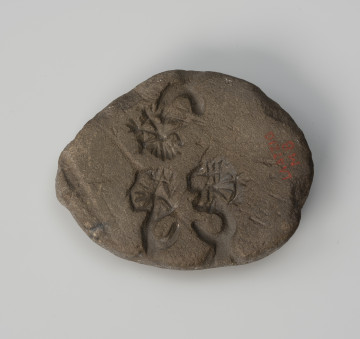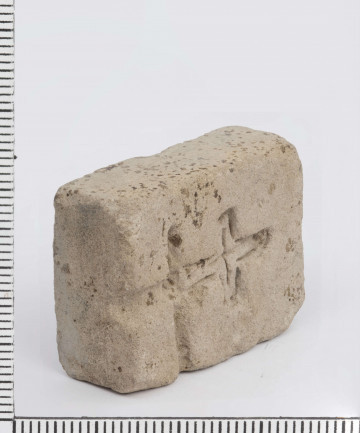
Casting mould
National Museum in Szczecin
Part of the collection: Middle Ages
During pre-war earthworks near today's Podzamcze, one part of a two-part stone casting mould with images of bearded faces was found. It was made of steatite, also known as soapstone, which is soft and easy to work with. According to its discoverers, it was used for casting fishing hooks and weights for nets. The development of research made it possible to verify this interpretation. Today, it is mostly believed to be a mould for casting handles of small pendants, the so-called whetstone or bells. The attention is drawn, above all, by the different sizes of male faces of almond shape, with large eyes and abundant beard. After casting, an object with the image of four faces was obtained, regarded as the fitting of a small whetstone. These polycefalic images have led researchers to conclude that the Szczecin form is related to symbolic cult objects, such as small whetstones (pendants) with distant traditions dating back to the 7th century originating from the Anglo-Saxon circle. The idea was supposedly brought to the southern coast of the Baltic Sea by Scandinavians in the Viking Age. There are opinions that the Scandinavians used whetstone pendants. According to another theory, the mould was used to cast bells. However, no bells dated to the early Middle Ages with multi-face or other depictions have been found so far. Interestingly, the Szczecin mould has no traces of use.
Anna Bogumiła Kowalska
Author / creator
Dimensions
cały obiekt: height: 7.2 cm, width: 5.2 cm
Object type
casting mold, accessories
Technique
engraving, polishing, cutting
Material
steatite, stone
Creation / finding place
Owner
Muzeum Narodowe w Szczecinie
Identification number
Location / status

National Museum in Szczecin

701 — 1150
National Museum in Szczecin

476 — 1100
National Museum in Lublin
DISCOVER this TOPIC
National Museum in Lublin
DISCOVER this PATH
Educational path